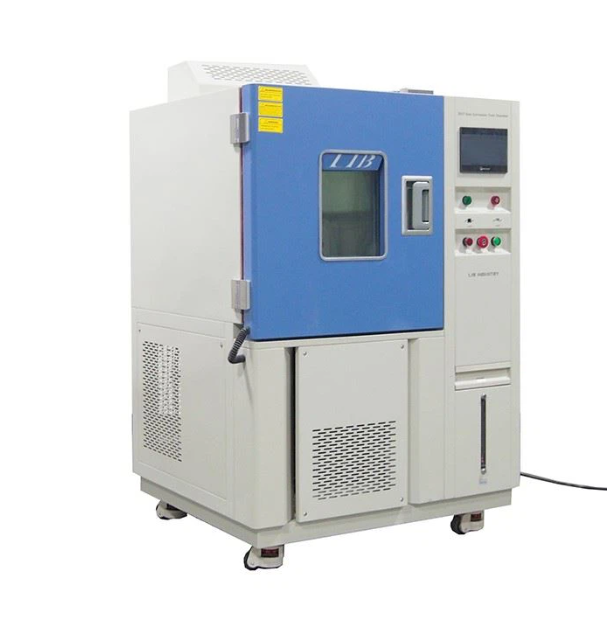Evaluates toilet seat material resistance to HCl/Ammonia corrosion.
WhatsApp : +86 13816217984
Email : info@qinsun-lab.com

ASTM D543
IAPMO/ANSI Z124.5
Product Introduction:
This tester is specifically designed to subject samples of toilet seat material or sections of a finished toilet seat to controlled exposure of hydrochloric acid and ammonia. The exposure can be in the form of liquid contact, vapor exposure, or a combination, simulating conditions like splashes, cleaning residue, or enclosed bathroom atmospheres. The primary purpose is to determine if the material exhibits adverse effects such as discoloration, staining, loss of gloss, swelling, softening, cracking, blistering, or other forms of degradation after a specified exposure duration and temperature. This is crucial for manufacturers to select appropriate materials, ensure product quality, and predict how toilet seats will withstand chemical attack over their lifespan in a typical bathroom environment.
Toilet seat manufacturers for material selection, quality control, and product development.
Material suppliers providing plastics and coatings for bathroom fixtures.
Testing laboratories specializing in furniture and sanitary ware testing.
Specifically targets the corrosive effects of hydrochloric acid and ammonia relevant to bathroom environments.
Assesses material durability and appearance retention under chemical exposure.
Helps ensure product quality and compliance with potential performance requirements.
Provides objective assessment of chemical degradation.
Essential for material selection in corrosive bathroom environments.
Controlled test conditions allow for repeatable results.
Based on the specific test described and general chemical resistance testers:
Sealed test chamber(s) constructed from materials resistant to hydrochloric acid and ammonia vapors and solutions.
System for introducing and maintaining controlled concentrations of hydrochloric acid and ammonia within the chamber(s).
Sample holders or racks designed to securely support test specimens without interfering with chemical exposure.
Capability to control and monitor the temperature within the test chamber(s).
Timer for controlling the duration of the chemical exposure period.
Safety features for handling corrosive chemicals, such as proper sealing and potentially ventilation connections.
(Optional) Viewing window to observe samples during exposure.
(Optional) Provisions for assessing changes in sample properties after exposure (e.g., color or gloss).

Qinsun Instruments Co., LTD is a professional laboratory testing instrument manufacturer in China,Have been focusing on laboratory instrument R&D more than 30 years and have rich industry experience,Based on international testing standards,We are also the instrument supplier for BV SGS laboratory,We provide one-stop solutions for lab instruments,Free Training and Turn-Key Service,Products exported all over the world,Offer 36 month warranty and are a trustworthy partner.
Company Phone
+86-21-6420 0566
Working hours
Monday to Friday
Mobile phone:
13816217984
Email:
info@qinsun-lab.com
